第54章 The History of the Castle (3)
On the 24th of November 1244 Henry issued a writ enjoining "the clerks of the works at Windsor to work day and night to wainscot the high chamber upon the wall of the castle near our chapel in the upper bailey, so that it may be ready and properly wainscoted on Friday next [the 24th occurring on a Tuesday, only two days were allowed for the task], when we come there, with boards radiated and coloured, so that nothing be found reprehensible in that wainscot; and also to make at each gable of the said chamber one glass window, on the outside of the inner window of each gable, so that when the inner window shall be closed the glass windows may be seen outside."The following year the works were suspended, but they were afterwards resumed and continued, with few interruptions; the keep was new constructed; a stone bench was fixed in the wall near the grass-plot by the king's chamber; a bridge was thrown across the ditch to the king's garden, which lay outside the walls; a barbican was erected, to which a portcullis was subsequently attached; the bridges were defended by strong iron chains; the old chambers in the upper ward were renovated; a conduit and lavatory were added; and a fountain was constructed in the garden.
In this reign, in all probability, the Norman Tower, which now forms a gateway between the middle and the upper ward, was erected.This tower, at present allotted to the house keeper of the castle, Lady Mary Fox, was used as a prison-lodging during the civil wars of Charles the First's time; and many noble and gallant captives have left mementoes of their loyalty and ill fate upon its walls.
In 1260 Henry received a visit to Windsor from his daughter Margaret, and her husband, Alexander the Third, King of Scotland.The queen gave birth to a daughter during her stay at the castle.
In 1264, during the contest between Henry and the barons, the valiant Prince Edward, his son, returning from a successful expedition into Wales, surprised the citizens of London, and.carrying off their military chest, in which was much treasure, retired to Windsor Castle and strongly garrisoned it.The Queen Eleanor, his mother, would fain have joined him there, but she was driven back by the citizens at London Bridge, and compelled to take sanctuary in the palace of the Bishop of London, at St.Paul's.
Compelled at length to surrender the castle to the barons, and to depart from it with his consort, Eleanor of Castile, the brave prince soon afterwards recovered it, but was again forced to deliver it up to Simon de Montford, Earl of Leicester, who appointed Geoffrey de Langele governor.But though frequently wrested from him at this period, Windsor Castle was never long out of Henry's possession; and in 1265the chief citizens of London were imprisoned till they had paid the heavy fine imposed upon them for their adherence to Simon de Montford, who had been just before slain at the battle of Evesham.
During this reign a terrific storm of wind and thunder occurred, which tore up several great trees in the park, shook the castle, and blew down a part of the building in which the queen and her family were lodged, but happily without doing them injury.
Four of the children of Edward the First, who was blessed with a numerous offspring, were born at Windsor; and as he frequently resided at the castle, the town began to increase in importance and consideration.By a charter granted in 1276 it was created a free borough, and various privileges were conferred on its inhabitants.Stow tells us that in 1295, on the last day of February, there suddenly arose such a fire in the castle of Windsor that many offices were therewith consumed, and many goodly images, made to beautify the buildings, defaced and deformed.
Edward the Second, and his beautiful but perfidious queen, Isabella of France, made Windsor Castle their frequent abode; and here, on the 13th day of November 1312 at forty minutes past five in the morning, was born a prince, over whose nativity the wizard Merlin must have presided.Baptized within the old chapel by the name of Edward, this prince became afterwards the third monarch of the name, and the greatest, and was also styled, from the place of his birth, EDWARD OFWINDSOR.
II.Comprising the Third Great Epoch in the History of the Castle--And showing how the Most Noble Order of the Garter was instituted.
Strongly attached to the place of his birth, Edward the Third, by his letters patent dated from Westminster, in the twenty-second year of his reign, now founded the ancient chapel established by Henry the First, and dedicated it to the Virgin, Saint George of Cappadocia, and Saint Edward the Confessor; ordaining that to the eight canons appointed by his predecessor there should be added one custos, fifteen more canons, and twenty-four alms-knights; the whole to be maintained out of the revenues with which the chapel was to be endowed.The institution was confirmed by Pope Clement the Sixth, by a bull issued at Avignon the 13th of November 1351.